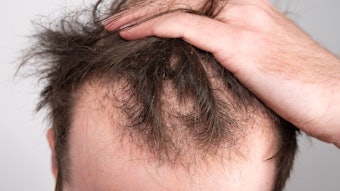In recent years, interest in sourcing plant roots as active ingredients for cosmetic use has grown tremendously. Roots have a major role in the plant as they anchor and support its growth, transporting water and ions captured from the soil, but also storing products from photosynthesis.1
Log in to view the full article
In recent years, interest in sourcing plant roots as active ingredients for cosmetic use has grown tremendously. Roots have a major role in the plant as they anchor and support its growth, transporting water and ions captured from the soil, but also storing products from photosynthesis.1
Roots also produce a series of molecules to support the growth of shoots, e.g., phyto-hormones, and protect the plant from attack by fungi and nematodes in the soil, e.g., flavonoids.2 Flavonoids and secondary metabolites play an important role as signaling molecules within the soil ecosystem and rhizosphere, maintaining the right interactions with the living organisms surrounding the plant to ensure its survival and protect its growth.2, 3
Adaptogens
Many secondary plant metabolites, in particular steroids, lignans, glycosides and saponins, have shown adaptogen properties in the human body to support its response to stress and energy needs. Acting on the pituitary-adrenal axis, they induce stress proteins but also possess immune-modulatory activities.4
These qualities have applications in skin biology. Recent observations of adaptogenic plant extracts have revealed their ability to reduce atopic dermatitis, likely through an immune-modulatory action.5 Thus, roots rich in secondary metabolites can have a specific action on skin to increase its vitality and response to environmental stress such as UV radiation and pollution.
Maca and Suma Roots
Interest in plant roots for cosmetic ingredients has driven attention to two plants from South America: maca or Lepidium meyenii, which is endemic to Peru; and suma, or Pfaffia glomerata, Pfaffia paniculata or Hebanthe paniculata, which is prevalent in Brazil. The roots of these two plants, cultivated by the local population for centuries and part of traditional medicine, have shown stress-relieving and immune-modulatory properties6, 7 typical of adaptogenic plants. Acting similar to Asian ginseng, maca and suma root have been referred to as Peruvian and Brazilian ginseng, respectively.
Maca root: The maca plant is cultivated at an altitude of more than 4,000 m in the Andean Region, particularly in the highlands of Peru. While primary metabolites account for the nutritional value of the root, secondary metabolites including macaene, macamides (see Figure 1), β-sitosterol, campesterol and glucosinolates account for most of its biological and medicinal properties.6
Although maca root mostly has been valued for its positive effects on fertility, libido, energy, memory and learning,6 evidence suggests its use in personal care. For example, recent publications highlight the polyphenol-rich root extract’s antioxidant properties, in particular to scavenge free radicals and protect cells against oxidative stress8 and UV-induced oxidation.9
In the latter case, investigators have observed increased UV protection by boiling the extract.9 This is because boiling or steaming adaptogenic plants such as maca and ginseng releases metabolites with increased bio-availability, making them more active on human tissues.6, 10
From a sustainability point of view, maca root has moved from a local food source to global interest, not only from the food and supplements industry, but also from the pharmaceutical and, more recently, cosmetic industries. Due to this increased demand, to avoid depleting sources and preserve cultivation skills, maca root has been the target of sustainability programs by the United Nations. These programs address biodiversity and ecosystem protection while supporting the farming community where maca cultivation is the principal source of income.11
To guarantee the plant’s sustainability, its cultivation area and yield must be increased. And in order to grow production and yield, good quality, sufficient seed along with adequate weed control, better soils and improved post-harvest handling, especially during the drying process, must be established.12 Since the concentration of main actives, i.e., secondary metabolites, is influenced by environmental factors and production sites,13 it is important to standardize specifications during production and/or guarantee the specific source.
More recently, cosmetic ingredient suppliers have built supply chains to sustainably produce maca root for cosmetic applications. However, its properties in skin and hair treatments require further exploration, and validation for safety and efficacy, before maca root ultimately is applied in finished products.
Suma root: The suma plant is indigenous to the Amazon area. Local users call the suma root “para toda” (“for everything”), and have used it for generations for a variety of health purposes, including as a general tonic, energy booster and stress reliever.14 Suma root remains an important herbal remedy in the traditional medicine of rainforest Indian tribes.
Within the plant, the molecules having biological and medicinal activities include phytochemicals such as pfaffosides, e.g., nortriterpene saponins, up to 11%; and sterols, e.g., ecdysterone at ~0.6% (see Figure 2).14, 15 In various animal models, suma root extract has shown analgesic and anti-inflammatory activities, without local irritation.16, 17
Suma extract and its constituents also have been tested and validated for cosmetic applications. For example, in 1997, a patent was published claiming that ecdysterone, a suma root phytosterol, imparted skin hydration and barrier properties. In particular, it strengthened the skin barrier, protected against water loss and increased keratinocyte differentiation.18
More recently, suma root extract in a serum was shown to reduce periorbital dark circles by decreasing pro-inflammatory markers and increasing antioxidant enzymes.19 In relation, studies of suma root extract, particularly on the triterpenes and glycosides fraction, show it strongly inhibits melanogenesis, stronger than the reference molecule arbutin, and without cytotoxicity. This suggests a role for skin brightening or for the treatment for post-inflammatory hyperpigmentation.20
Similar to maca root, suma root faces challenges regarding its sustainability in a demanding market, which is growing 10% annually. Protecting the local environment, sustaining production and securing a stable income for the communities involved in its collection and cultivation are fundamental.
Suma root grows in fragile, sandy soil environments with low fertility, and in preservation areas at river margins, which are not easy to adapt for agriculture. Therefore, cultivation must occur rapidly to avoid the disappearance of this wild species.14 Programs are in place to optimize the cultivation of suma root21 and to ensure that the levels of its main constituents, such as highly demanded sterols, are consistent through sourcing and extraction.22 Integrated, sustainable production of the root also is implemented. For example, the plant may be grown with a cogeneration plant using residue from previously extracted roots, or grown with the unused aerial parts from suma plant used as fuel.23
Formulating with Root Extracts
Formulating with a root extract can be challenging. The extract may be supplied in powder or liquid form but its solubility can still be an issue, as can problems associated with color and odor. However, due to the high potency of the molecules in the root extract, only low concentrations are required in the finished product. In fact, sometimes concentrations as low as 0.05% are sufficient to observe biological activity and efficacy on the targeted skin area. In such cases, issues related to solubility, color and odor can be resolved.
Conclusions
Root extracts offer characteristics that fit well with the personal care industry’s constant sourcing for natural ingredients with proven efficacy. They are particularly rich in molecules with high potency and provide strong skin benefits; of course, in consideration of this, a serious evaluation of their safety is mandatory.
References
- NM Kerk and IM Sussex, Roots and root systems, in Encyclopedia of Life Sciences, John Wiley and Sons Ltd, Chichester (2012)
- X Zhuang, J Gao, A Ma, S Fu and G Zhuang, Bioactive molecules in soil ecosystems: Masters of the underground, Int J Mol Sci 14(5) 8841–68 (2013)
- HP Bais, TL Weir, LG Perry, S Gilroy and JM Vivanco, The role of root exudates in rhizosphere interactions with plants and other organisms, Annu Rev Plant Biol 57 233–66 (2006)
- H Wagner, H Nörr and H Winterhoff, Plant adaptogens, Phytomedicine 1(1) 63–76 (1994)
- YH Kang and HM Shin, Inhibitory effects of Schizandra chinensis extract on atopic dermatitis in NC/Nga mice, Immunopharmacol Immunotoxicol 34(2) 292–8 (2012)
- GF Gonzales, Ethnobiology and ethnopharmacology of Lepidium meyenii (maca), a plant from the Peruvian highlands, Evid Based Complement Alternat Med 193496 (2012)
- FR Mendes and EA Carlini, Brazilian plants as possible adaptogens: An ethnopharmacological survey of books edited in Brazil, J Ethnopharmacol 109(3) 493–500 (2007)
- M Sandoval, NN Okuhama, FM Angeles, VV Melchor, LA Condezo, J Lao and MJS Miller, Antioxidant activity of the cruciferous vegetable maca (Lepidium meyenii), Food Chem 79 207–13 (2002)
- C Gonzales-Castañeda and GF Gonzales, Hypocotyls of Lepidium meyenii (maca), a plant of the Peruvian highlands, prevent ultraviolet A-, B- and C-induced skin damage in rats, Photodermatol Photoimmunol Photomed 24(1) 24–31 (2008)
- SH Sohn et al, A comparison of antioxidant activity of Korean white and red ginsengs on H2O2-induced oxidative stress in HepG2 hepatoma cells, J Ginseng Res 37(4) 442–50 (2013)
- L Jaramillo Castro, Trade and biodiversity: The biotrade experiences in Latin America, UNCTAD (2012)
- C Quiroz and R Aliaga, “Maca (Lepidium meyenii Walp.)” in M Hermann and J Hellers, eds, Andean roots and tubers: Ahipa, arracacha, maca and yacon, Promoting the Conservation and Use of Underutilized Neglected Crops, International Plant Genetic Resources Institute, Rome (21) 173–197 (1997)
- C Clément et al, Secondary metabolites in maca as affected by hypocotyl color, cultivation history and site, Agron J 102(2) 431–9 (2010)
- JC Corrêa and LC Ming, Fáfia [Pfaffia glomerata (Spreng.) Pedersen], the Brazilian ginseng, in MN Alexiades and P Shanley, eds, Forest Products, Livelihoods and Conservation. Case Studies of Non-timber Forest Product Systems, Center for International Forestry Research Latin America (3) 331–45 (2005)
- J Li, AN Jadhav and IA Khan, Triterpenoids from Brazilian ginseng, Pfaffia paniculata, Planta Med 76(6) 635–9 (2010)
- AG Neto et al, Analgesic and anti-inflammatory activity of a crude root extract of Pfaffia glomerata (Spreng) Pedersen, J Ethnopharmacol 96(1-2) 87–91 (2005)
- G Mazzanti and L Braghiroli, Analgesic antiinflammatory action of Pfaffia paniculata (Martius) kuntze, Phytother Res 8(7) 413–16 (1994)
- US Pat 5609873, Use of an ecdysteroid for the preparation of cosmetic or dermatological compositions intended, in particular, for strengthening the water barrier function of the skin or for the preparation of a skin cell culture medium, as well as to the compositions, A Meybeck, FEE Bonte and EG Redziniak, assigned to LVMH Recherche (Mar 11, 1997)
- S Eberlin et al, Effects of a Brazilian herbal compound as a cosmetic eye care for periorbital hyperchromia (“dark circles”), J Cosmet Dermatol 8(2) 127–35 (2009)
- S Nakamura, G Chen, S Nakashima, H Matsuda, Y Pei and M Yoshikawa, Brazilian natural medicines. IV. New noroleanane-type triterpene and ecdysterone-type sterol glycosides and melanogenesis inhibitors from the roots of Pfaffia glomerata, Chem Pharm Bull (Tokyo) 58(5) 690–5 (2010)
- PM Magalhães, Agrotecnologia para el cultivo de fáfia o ginseng brasileiro, in Fundamentos de Agrotecnología de Cultivo de Plantas Medicinales Iberoamericas 323–32 CYTED, Bogotá (2000)
- I Montanari, Jr, PM Magalhães and CL Queiroga, Influences of plantation density and cultivation cycle in root productivity and tenors of b-ecdysone in Pfaffia glomerata (Spreng.) Pedersen, in Proceedings of the II World Congress on Medicinal and Aromatic Plants for Human Welfare 10–15, Org ICMAP-ISHS-SAIPA, Mendoza, Argentina (1997)
- DT Santos, JQ Albarelli and MAA Meireles, Simulation of an integrated sustainable production of extract from Brazilian ginseng roots with a cogeneration plant, Chem Engr Transactions 29 91–6 (2012)










